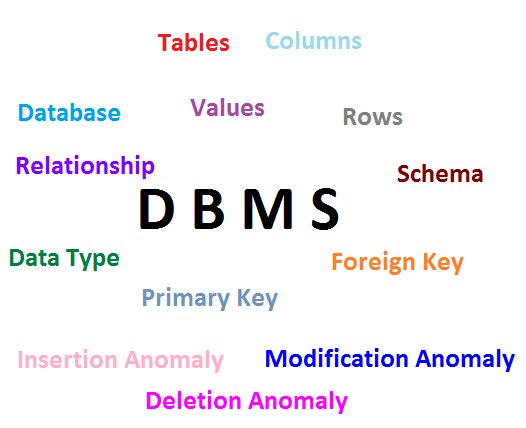Getting started with Database Management System.
In this video tutorial we’re trying our best to keep everything to the minimum, and make sure not to make it look complicated for beginners.
The tables and the normalization shown in the video are just for the purpose of demonstration.

DBMS is a software system which helps in managing incoming data, organizes it and provides certain ways for the data to be modified and/or extracted by the users or other programs.
Some examples of Database Management System Software include MySQL, PostgreSQL, Microsoft Access, SQL Server, FileMaker, Oracle, RDBMS, dBASE, Clipper, and FoxPro.
Also: Some Native database systems that can be connected with PHP ?
Tables Relational databases are made up of relations, commonly known as TABLES.
Relationships exists between the tables and the data are inter-related by making use of Primary and Foreign keys.
Table Columns
It has unique names.
Each column has an associated datatype.
Columns are sometimes called as fields or attributes.
Table Rows
Each row in the table represents individual data.
Rows are also called as records or tuples.
Values
Every value must have the same data type, as specified by it’s column.
Key
To identify each row uniquely.
The identifying column in a table is called as key or primary key.
Schema
Complete set of table design for a database.
It’s like a blueprint for the database.
A Schema should show the tables along with their columns, and the primary and foreign keys. Usually primary key’s are underlines and foreign keys are italicized.
Database Management System: Basics
[youtube https://www.youtube.com/watch?v=aR44FbeeFH8]
Anomalies
Assume that we’re running an online store.
We’ve a order table.
If a person called Satish orders Apple iPad, Mac Book and a iPhone from our site.
We store his name and address and quantity of his order.
Next, Satish moves to a different place before we process the order, now we will need to update his address at 3 places!
Doing 3 times as much work. We may miss updating Satish’s address in some place, making the data inconsistent. This is called modification anomaly.
If we design our database table in this way, we’ll need to take the address of Satish each time he orders something from our online store. This way, we need to always make sure the address(data) is consistent across all the rows. If we do not take care, we may end up with conflicting data.
Ex: One row may indicate Satish to be living in Bangalore and another row may indicated Satish to be living in New York!
This scenario is called Insertion anomaly.
Once all the orders of Satish has been processed, we delete the records. This way, we no longer have Satish’s address. So we can’t send any promotional offers etc to Satish in the future. If he want’s to order something again from our online store, he need to enter his address again. This scenario is called deletion anomaly.
We could solve these anomaly problems by making use of Primary and Foreign key’s and by developing the skill/art of normalization.
Database normalization is the process of organizing the fields and tables of a relational database to minimize redundancy and dependency. Normalization usually involves dividing large tables into smaller (and less redundant) tables and defining relationships between them. The objective is to isolate data so that additions, deletions, and modifications of a field can be made in just one table and then propagated through the rest of the database using the defined relationships.
Primary Key
The PRIMARY KEY constraint uniquely identifies each record in a database table.
Primary keys must contain unique values.
A primary key column cannot contain NULL values.
Each table should have a primary key, and each table can have only ONE primary key.
Foreign Key
A foreign key is a field in a relational table that matches a candidate key of another table. The foreign key can be used to cross-reference tables.
Relationships
We’ll cover
one-one
one-many
many-many
relationships in coming video tutorials, with some real time examples.
